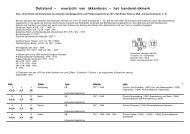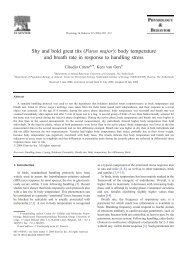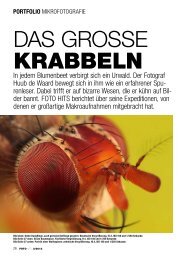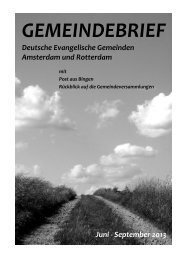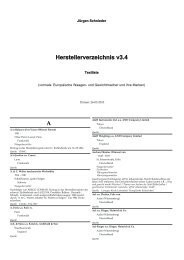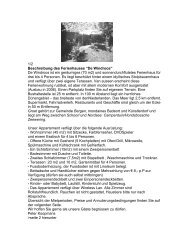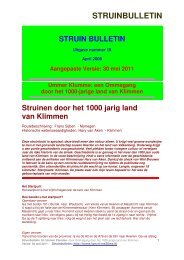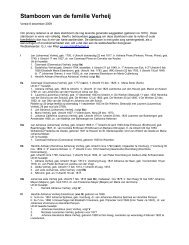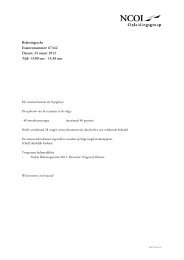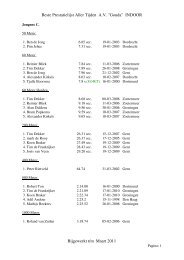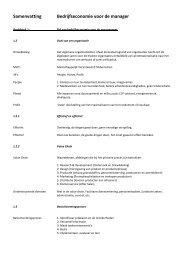The Makassar Malays - Cambridge Journals
The Makassar Malays - Cambridge Journals
The Makassar Malays - Cambridge Journals
Create successful ePaper yourself
Turn your PDF publications into a flip-book with our unique Google optimized e-Paper software.
406<br />
heather sutherland<br />
numbered over 3,750: a generally modest increase compared with the rapid growth between 1685<br />
and 1697. While this early census material provides us with rudimentary information, we need<br />
more if we are to have some image of Malay neighbourhoods. Such information is only sporadically<br />
available.<br />
Fires were one of the most devastating events in <strong>Makassar</strong>’s urban life, and descriptions give us<br />
some insight into settlement patterns. In 1679 a great fire, fanned by a strong sea wind, destroyed<br />
eighty houses in Vlaardingen, including the living quarters of two Moor-<strong>Malays</strong>, Ince Buang and<br />
Ince Tengah, sons of the famous merchant, Mapulle. <strong>The</strong>ir compound consisted of four large<br />
houses, and assorted small dwellings where their people lived. 48 <strong>The</strong> many slaves and debtbondsmen<br />
were expected to earn their own living; some occupations – cooking coconut oil, baking<br />
sweets for sale in the market – were high fire-risk activities. After the Vlaardingen compound was<br />
burnt out, this ‘great rabble’ moved into the Moorish quarter between the beach and the Kampung<br />
Bugis. Here, in August 1680, their enterprises triggered a new fire which destroyed 150 houses,<br />
including their whole compound, much of the Wajorese area and part of the kampung for Moors<br />
and Bugis. 49<br />
Over a hundred years later, on 6 August 1791, another fire swept through the Kampung<br />
Melayu, destroying it completely. <strong>The</strong> Dutch authorities saw this as an opportunity to improve town<br />
security, and contemplated resettling all <strong>Malays</strong> in Kampung Baru, south of the castle. This would<br />
involve the removal of 38 ‘kampung’ (used here in the sense of compounds belonging to individual<br />
extended families), of which just more than half were actually Malay-owned. 50 It was reckoned that<br />
these thirty-eight compounds comprised at least 300 houses, and accommodated 2,300 or 2,400<br />
people. 51<br />
Since the total non-European population of <strong>Makassar</strong> in that year (1791) was 4,934, 52 about<br />
half the town would have had to be re-housed. <strong>The</strong> densely settled Chinese street was not involved in<br />
this plan, nor were the more peripheral kampung. It is, therefore, likely that a very high proportion<br />
of the ‘Malay’ population lived in the twenty Malay-owned compounds considered for removal.<br />
Since they probably varied in size from poor clusters of a few huts to large complexes, it is not<br />
possible to be precise, but many compounds could have consisted of more than ten houses, with<br />
dozens of inhabitants. If this was so, then it illustrates probable patterns of dependency, with<br />
dominant patrons sheltering many clients. However, the ethnic mix of compound ownership (not<br />
to mention their undoubtedly even more heterogeneous inhabitants) warns us against any assumed<br />
congruence between formal classification and social reality. <strong>The</strong> relocation plan was submitted to<br />
the VOC High Government in Batavia, which rejected it as impossible, given the scale of<br />
resettlement required. 53<br />
<strong>The</strong> Dutch regarded the integration of the <strong>Malays</strong> and Chinese into town life as important, for<br />
both economic and security reasons. In 1728, for example, Governor Gobius noted that the <strong>Malays</strong><br />
could muster 265 armed men, capable of turning out in ‘good order, under the command of their<br />
48 VOC 1358 f. 295, 1403 f. 254.<br />
49 VOC 1365 f. 449.<br />
50 Five compounds were along the beach to the west of Vlaardingen’s wall; four of these belonged to <strong>Malays</strong> and one to<br />
a Chinese. Of the sixteen compounds stretching from the sea along Vlaardingen’s northern wall seven were owned by<br />
<strong>Malays</strong>, two by Chinese, two by <strong>Makassar</strong>ese aristocrats, one by a prominent mestizo family, and four by other<br />
Sulawesians. Two of the seventeen remaining ‘kampung’ belonged to the Kapitan Melayu, nine were held by other <strong>Malays</strong>,<br />
and the rest by other Sulawesians.<br />
51 ARNAS Mak. 289/2. References in this format refer to documents from the <strong>Makassar</strong> collection, in the Arsip<br />
Nasional, Jakarta.<br />
52 VOC 3939 f. 80.<br />
53 ARNAS Mak. 289/2.





